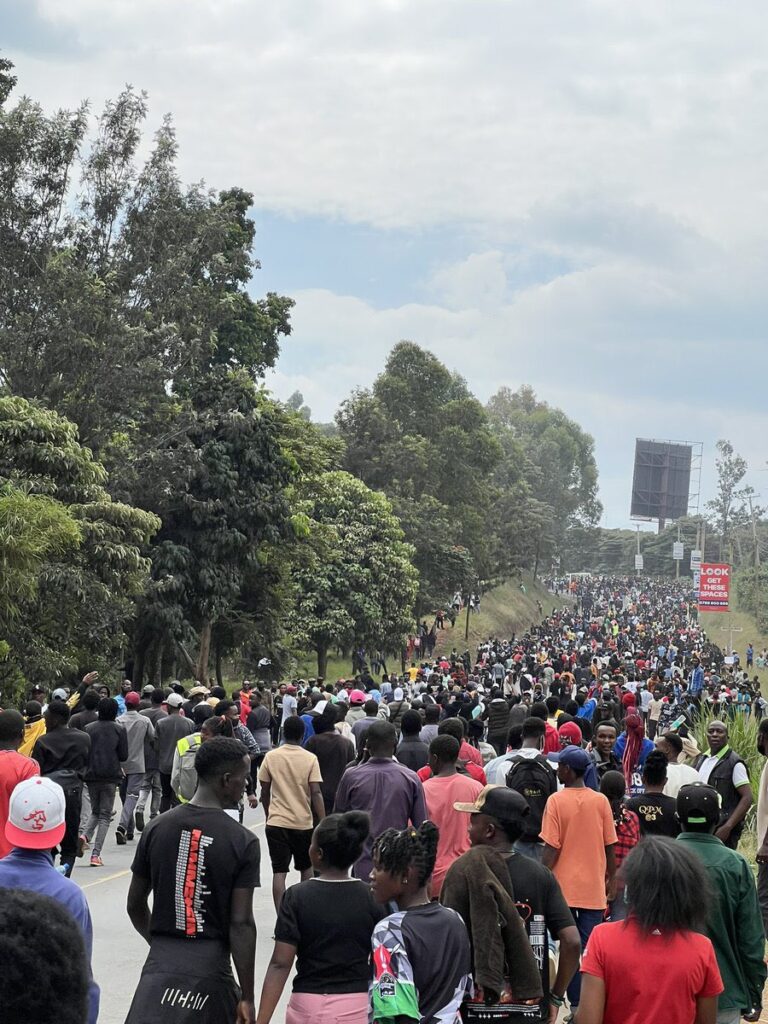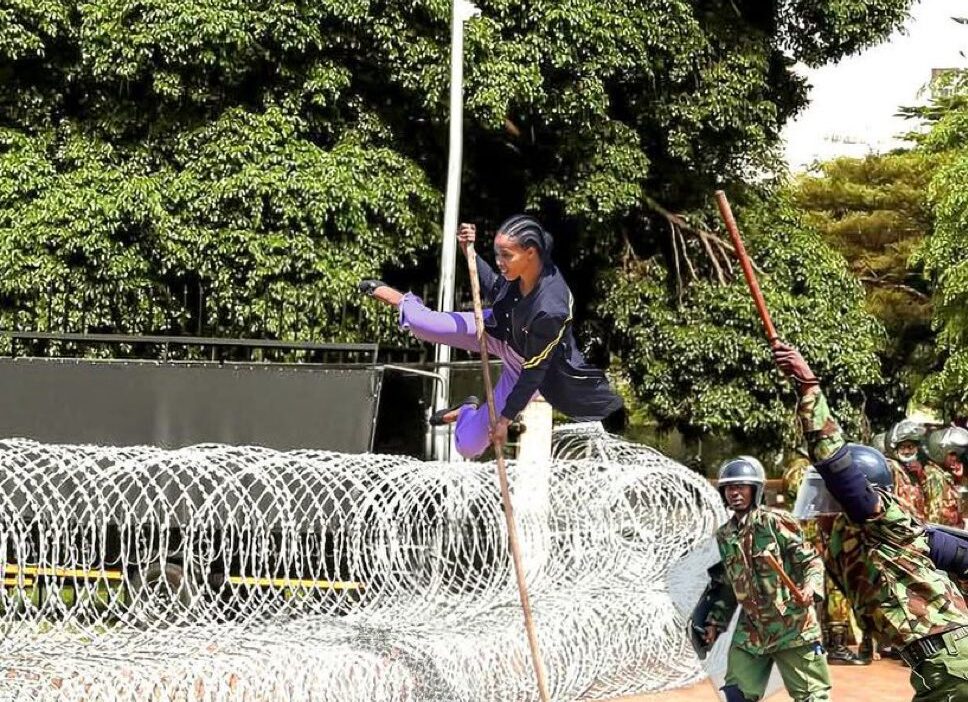The 2025 Maandamano Protests erupted once again on June 25, shaking Nairobi’s streets with a familiar fury. Thousands of demonstrators—predominantly youth—rallied to commemorate the lives lost during the 2024 anti-finance bill protests, demanding accountability and social justice. As Kenya confronts persistent economic challenges and a crisis of political legitimacy, these demonstrations signal a new era of citizen activism and generational defiance.
Table of Contents

Historical Context: A Nation Shaped by Protest
Kenya’s history is dotted with episodes of civic unrest. From the 1990s clamors for multiparty democracy to the post-election violence of 2007–2008, public demonstrations have long served as barometers of national anxiety. The 2024 and 2025 Maandamano Protests are the latest chapters in this enduring narrative. What makes them unique is the digital sophistication and decentralized leadership that fuel their momentum.
Kenya’s youth—comprising over 75% of the population—are no longer willing to accept broken promises. Their frustrations are amplified by social media and shared in real time with a global audience, giving the movement both urgency and visibility.
The Economic Picture: Numbers Behind the Anger
At the heart of the 2025 Maandamano Protests lies Kenya’s troubled economy:
- Public debt has surpassed KES 11 trillion.
- Youth unemployment hovers at over 35%.
- Inflation has pushed basic food prices up by 40% compared to 2023.
- Fuel taxes and digital levies introduced in 2024 have strained household incomes.
These conditions have made survival a daily battle for millions. The withdrawal of the 2024 Finance Bill, while significant, was not followed by meaningful structural reforms. Protesters argue that the government continues to prioritize international debt servicing over citizens’ welfare.
Voices from the Ground: What Protesters Are Saying
“We are tired of paying for corruption,” said Sharon Wanjiku, a 23-year-old university graduate turned street vendor. “Every year, it’s more tax, less food, fewer jobs. We won’t be silent anymore.”
James Otieno, a boda boda rider from Mathare, shared similar frustrations: “They treat us like criminals for asking for fairness. We lost friends in 2024. We’re marching so they didn’t die for nothing.”
The Maandamano movement is as much about memory as it is about momentum. Across Kenya, portraits of those killed in 2024 were held aloft, accompanied by chants, tears, and resolve.
International Reactions and Diaspora Solidarity
The 2025 Maandamano Protests have also captured international attention. Diaspora Kenyans held parallel vigils in cities like London, Washington D.C., and Berlin. Organizations such as Amnesty International and Human Rights Watch released fresh statements urging the Kenyan government to uphold human rights.
The African Union and United Nations issued cautious appeals for restraint and dialogue, while several African leaders remained notably silent—perhaps wary of encouraging similar protests at home.
Media Coverage and Narratives
Kenya’s media played a complicated role. While some outlets provided balanced reporting, others echoed state narratives portraying protesters as violent disruptors. In response, citizen journalists and influencers filled the gap—streaming live updates and countering misinformation.
One viral TikTok clip showed protesters cleaning streets after a demonstration, captioned “We are not thugs. We are citizens.” It racked up over 2 million views, helping reshape the public perception of the movement.
What’s Next: Will Change Follow?
The road ahead is uncertain. While the 2025 Maandamano Protests have reignited a national debate on governance and accountability, the government’s next steps remain unclear. Will they open space for reform, or entrench themselves further through repression?
Several civil society groups have proposed a National Dialogue Forum to mediate between protesters and the state, while legal advocates push for investigations into police conduct.
Meanwhile, organizers have hinted at an even larger march planned for August, marking Kenya’s independence month, to emphasize that true freedom must include economic and social justice.
Final Thoughts: A Nation on Edge, A Generation Awakening
As dusk settled on June 25, 2025, Nairobi’s streets bore fresh scars—but also a deeper resolve. The 2025 Maandamano Protests have cemented themselves not just as a continuation of last year’s rebellion but as a new chapter in Kenya’s ongoing democratic struggle.
For the youth who marched, mourned, and mobilized, this is more than protest—it is purpose. The fight for justice, equity, and dignity has begun anew, and its outcome will define the soul of the nation.
Frequently Asked Questions (FAQs) About the 2025 Maandamano Protests
What are the 2025 Maandamano Protests?
The 2025 Maandamano Protests refer to nationwide demonstrations held on June 25, 2025, commemorating the first anniversary of the deadly 2024 anti-finance bill protests. The protests are largely youth-led and aimed at addressing economic hardship, government corruption, and police brutality.
Why did people protest again in 2025?
Although the 2024 Finance Bill was rejected, the root causes—economic instability, high taxes, unemployment, and lack of government accountability—remain unresolved. Protesters returned to the streets to demand lasting reforms and honor the victims of the 2024 crackdown.
What does ‘Maandamano’ mean?
Maandamano is a Swahili term that means “protest” or “demonstration.” It has become a rallying cry for Kenyan citizens advocating for justice and reforms.
Who leads the Maandamano protests?
The protests are decentralized and primarily driven by Gen Z activists using social media. The movement is leaderless by design, allowing it to remain independent and resilient.
What was the government’s response to the 2025 protests?
The government once again deployed police equipped with tear gas and water cannons. The response was widely criticized as a continuation of state repression, reminiscent of the 2024 crackdown.
What impact have these protests had so far?
The protests have galvanized a new generation of politically active youth, sparked global conversations about governance in Kenya, and pressured the government to address its policies. However, long-term reforms are still awaited.
Are there plans for future protests?
Organizers and activists continue to use social media to mobilize and discuss future actions. As of now, more protests are likely if core grievances remain unaddressed.
How can people support the movement?
Supporters can amplify voices from the ground, donate to legal aid funds, attend peaceful protests, and engage in civic education to spread awareness about the issues driving the movement.



